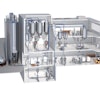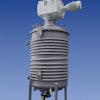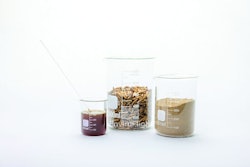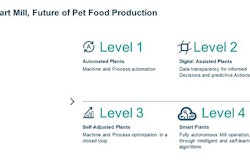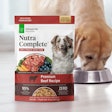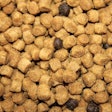
Word choices are important in the companion animal food industry. According to DVM Dr. Sheila Cross of the Clark Animal Hospital in Kitchener, Ontario, Canada, pet owners prefer to see “chicken” instead of terms like “chicken by-product” or “chicken meal” when reading pet food labels. The veterinarian suggests owners perceive that as a sign of “good, quality protein ingredients.”
More education needed on ingredient protein quality
The pet food industry and veterinarians could benefit from more education on the topic of ingredient protein quality.
“We don’t get a lot of training or information as to what ingredients will provide the appropriate amino acids to meet requirements,” said Cross. “When [a food] lists minimum protein, does this mean the amino acids are usable by the pet? I find it hard to know just based on looking at the ingredient list what actual amino acids are being provided. You can see on a label that there’s chicken, but I don’t know if that provides all the necessary amino acids, so when a client asks if that food is good, I can’t be entirely sure.”
Improving veterinarians’ knowledge could lead to better dialogue with clients and healthier patients.
Proper nutrition plays a vital role in animal health, and a part of meeting nutrient requirements for any given species is the quality of the ingredients used to formulate the diet. Protein quality (PQ) is a measure of how closely an ingredient or diet (mixture of ingredients) comes to meeting an animal’s indispensable amino acid (IAA) requirements. While this may seem like an easy factor to consider when choosing ingredients for a diet, most pet owners and veterinary professionals don’t know what PQ really indicates.
New research out of University of Guelph may provide insights
But new research out of the Ontario, Canada-based University of Guelph may provide more clarity about PQ — and better diet advice.
Dr. James Templeman and Dr. Anna Kate Shoveller from the university’s Department of Animal Biosciences recently published a paper in the Journal of Animal Science where adapted digestible IAA score (DIAAS-like) values were generated to predict the PQ of common ingredients used in dog diets. They used ileal digestibility values of comparative species, such as swine, that were found in the publicly available literature. Data from comparative species were used because in dogs, protein and amino acid digestibility is typically calculated using total tract digestibility, which does not consider the digestibility of individual amino acids. This may result in the bioavailability of certain amino acids being overestimated.
Templeman and Shoveller also generated DIAAS-like values using reference populations described by the National Research Council (NRC), Association of American Feed Control Officials (AAFCO) and European Pet Food Industry Federation (FEDIAF), an exercise that highlights differences in PQ interpretation among regulatory bodies and/or life stages.
“[We wanted to] try to introduce the entire industry to what could be a more attainable model moving forward for protein quality,” said Templeman.
“The overall goal is to get everybody to a point where they have to have quantitative comparisons among diets,” said Shoveller.
Drastic differences in PQ interpretation between regulatory bodies were discovered through their results.
“I wasn’t necessarily surprised about regulatory body differences, but maybe more so the parity we had across all ingredients,” said Templeman.
More needed for a true understanding of protein quality in pet food
Although these results highlight the inconsistencies surrounding the interpretation of PQ in dog diets, this study is just the foundation of what needs to be done to change how diets are formulated.
“We have a way to go in the pet food industry [to catch up to the human food industry], but these are very important steps for us to take because claim substantiation is going to be a major factor moving forward,” said Templeman. “There are strides that need to be taken on the research side of things to actually validate the empirical outcomes of these mathematical models in an in-vivo model, a very necessary step for us to take in terms of regulatory approval.”
While this is only the first step toward a better understanding of PQ and its utilization in the pet food industry, it emphasizes the importance of a PQ metric not only for use in diet formulation but also for dietary recommendations. After all, dogs do not have protein requirements, but rather amino acid requirements that must be met through appropriate high-quality protein sources.
“Having a metric for protein quality in pet food diets would allow us to make better recommendations for pet owners,” said Cross. “That will help to optimize the nutrition of our patients.”
The future of protein for pet food is now
